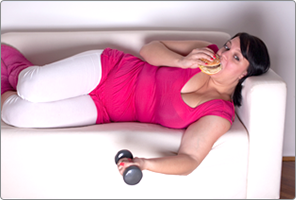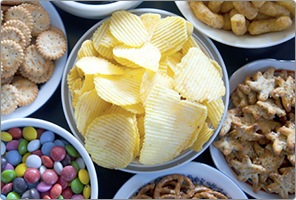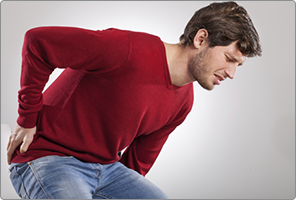Most people start an exercise program with the hopes of losing weight. But if you are working out, and there’s no movement on the scale, you could be making one of these mistakes.
1. Using Food as a Reward

There’s two common reasons that people eat too much when they start to workout. The first reason is using food as a reward for exercising. Some might think, “If I completed 30 minutes on the treadmill, I deserve a cheeseburger.” The problem is that most people overestimate calories burned and underestimate calories consumed, so the net result is eating more calories than you burned off. Thus, you have the inability to lose weight, or you might even gain weight. If your goal is to shed pounds, you need to create a calorie deficit. Find other ways to reward yourself and make a point of keeping a food diary to track your eating.
2. Eating More Than You Need

The second reason that people eat too much is that when they first start a workout plan, they may feel increased appetite. And they often crave simple carbs and sugars because these are a quick source of fuel. Instead of giving in to cravings, be smart about your eating. Have a small snack with some carbs and protein about an hour before you exercise (like half a banana and some almonds, or half a whole wheat pita with peanut butter). This will fuel your workout and keep you from being ravenous afterwards. Post workout, focus on getting protein and fiber that will provide satiety and help to repair your body. Make sure you are getting plenty of water and load up on low-carb veggies like leafy greens, broccoli, asparagus, Brussels sprouts, cucumber, tomato, cabbage, cauliflower, and bok choy.
3. Doing Too Much, Too Fast

We live in a culture of instant gratification, so the temptation is to jump into an intense exercise regimen that will give immediate results. The unwanted results can often be injury or burnout. Those who hurt themselves exercising might feel like giving up altogether and indulge in overeating. Or you may tax your body’s systems to the point of exhaustion or illness. It’s important to start slowly and talk to your health professional before beginning any exercise program. Seek out advice from trainers or experienced exercisers on what to do and how to do it. It may take time to see progress, but as they say, slow and steady wins the race.
The Power of Fiber
When you think about it, fiber is one of the stranger things we consume. After all, fiber doesn’t even get digested or used by our bodies: it just passes through. But fiber does amazing things on its journey through our bodies.
A high-fiber diet has been shown to have a stunning number of positive effects on health. Fiber helps to lower cholesterol levels, regulate blood glucose, prevent diverticulitis, reduce the risk of colorectal and breast cancer, lower the risk of heart disease and stroke, mitigate acne, and lower the risk of kidney stones.
Because fiber is not digested, it adds bulk, helping to move things along in the large intestine. A fiber-rich diet will help to avoid constipation, IBS, and hemorrhoids. Fiber also helps to flush toxins out of the body.
Gelatinous fibers slow down digestion, helping to regulate blood sugar and keep us feeling full and satisfied for longer. That is why a high fiber diet can help with weight control. Those who eat a high-fiber diet are able to better maintain their weight and stick to a diet plan.
How much do you need? The USDA recommends 14 grams of fiber for every 1,000 calories consumed. So if you are eating 2,500 calories, you should consume around 35 grams of fiber.
Some of the best sources of fiber are vegetables, fruits, legumes, seeds and nuts. Here are a few of our favorite fiber-rich foods and how many grams of fiber each has per serving.
- Chia seeds (10 g)
- Flax seeds (4 g)
- Pumpkin seeds (5 g)
- Almonds (11 g)
- Sweet potatoes (4 g)
- Black beans (15 g)
- Cannellini beans (13 g)
- Peas (7 g)
- Cauliflower (12 g)
- Broccoli (4.5 g)
- Brussels sprouts (4 g)
- Artichokes (7 g)
- Raspberries (8 g)
- Blackberries (8 g)
- Pear (6 g)
For a delicious smoothie recipe, packed with fiber and protein, check out our recipe page here [1].